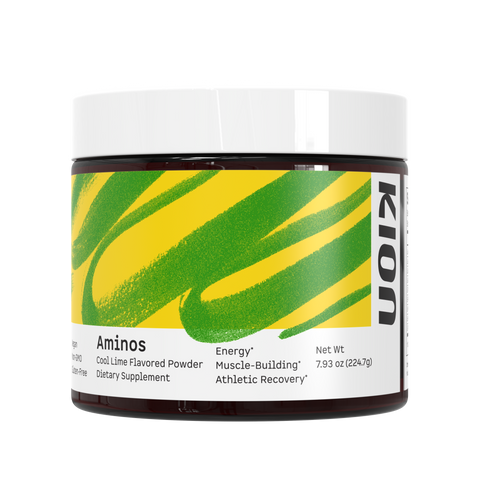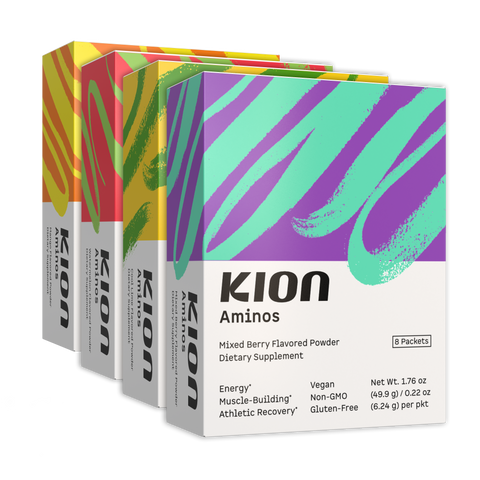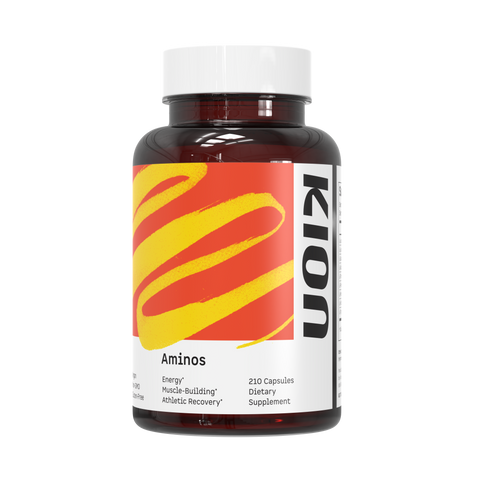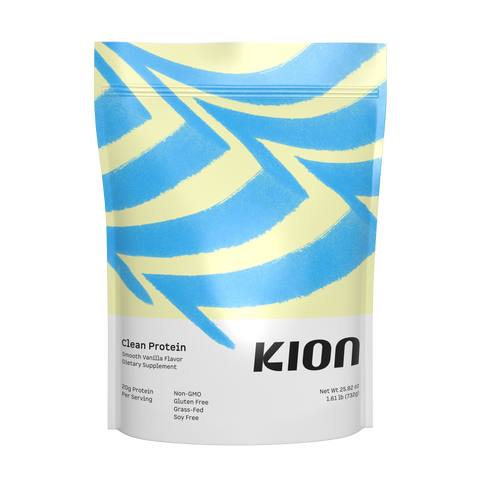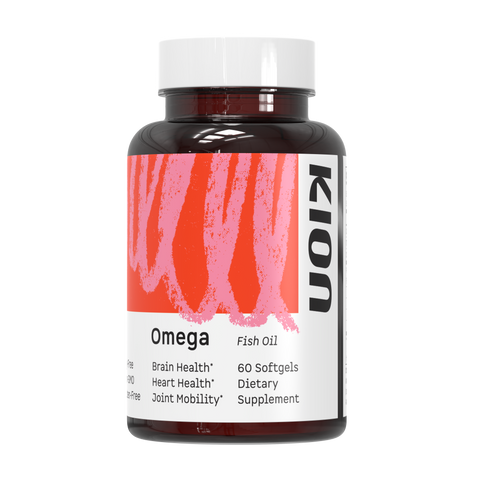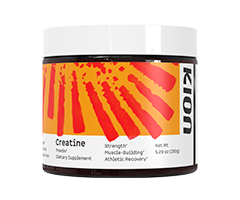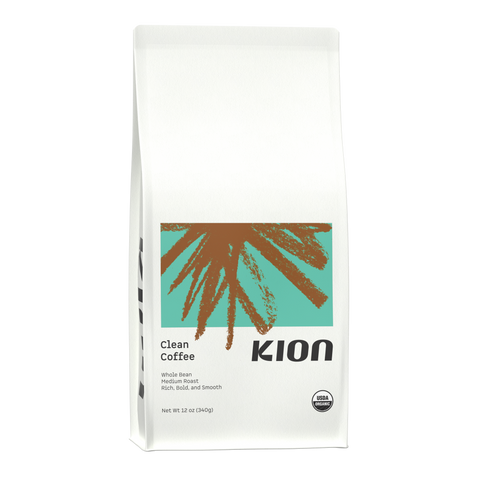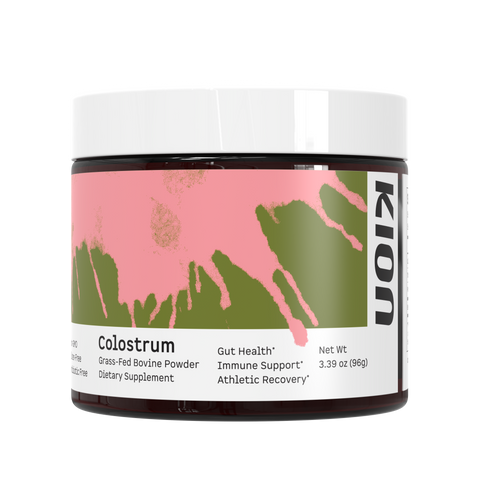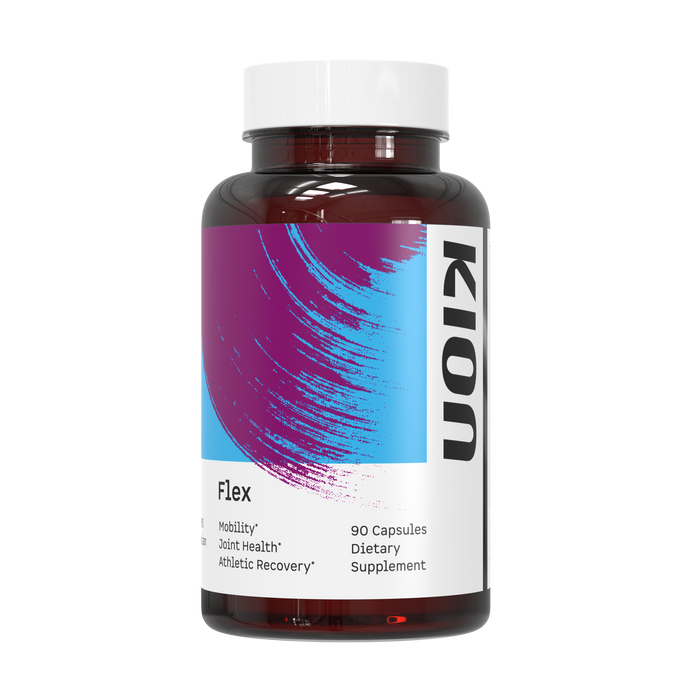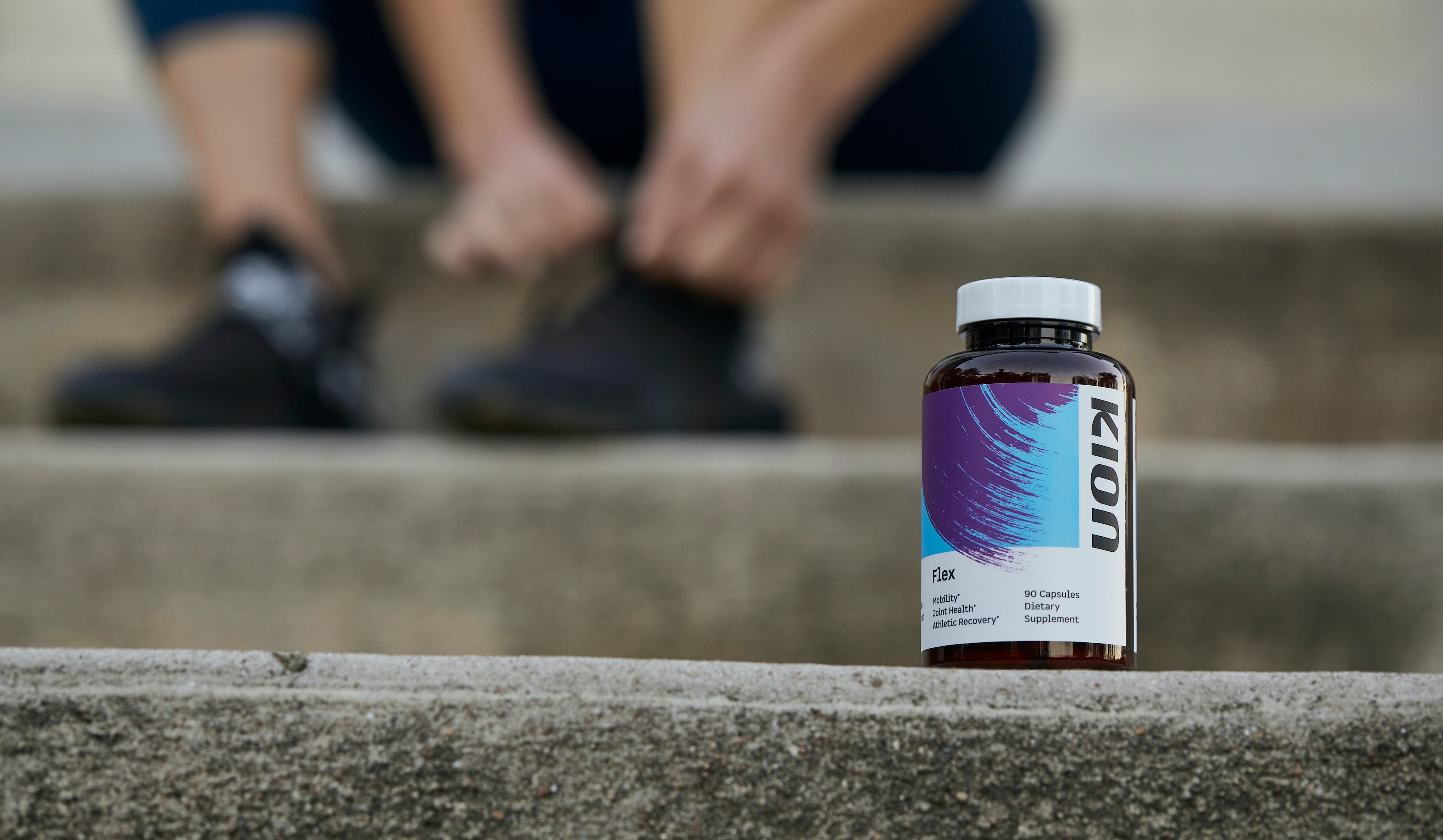Turmeric is everywhere nowadays: supplements, beauty products, salad dressings, fancy overpriced lattes. It's even made its way into chocolate.
You've probably had your fingers or countertops stained by turmeric, sprinkled turmeric powder on your salads or smoothies, or started taking a turmeric supplement for any number of the seemingly infinite benefits of this wonder-spice.
But when it comes to the difference between turmeric and curcumin, many are left scratching their heads.
- Do I need to take turmeric with black pepper?
- Can I just drink turmeric tea, or are supplements better?
- Is turmeric more easily absorbed by taking it with fat?
- Turmeric vs curcumin, which is better?
- What's the best source for bioavailable turmeric?
In today's article, you'll discover the answers to all of these questions, get a brief tutorial on the history of turmeric, and much more.
Turmeric Vs. Curcumin (& The Big Problem With Curcumin)
Turmeric and curcumin are (incorrectly) used almost interchangeably.
Even though curcumin comes from turmeric, when it comes to their uses, benefits, and bioavailability, the differences between the two are fairly significant.
When you see a turmeric supplement or turmeric powder in the spice aisle of your grocery store, what you're seeing is simply a ground-up version of a turmeric rhizome (Curcuma longa), which is a perennial plant belonging to the family Zingiberaceae.
If you've never seen it, it looks a lot like ginger, but with a more vibrant, orange color.
This color comes from polyphenolic pigments, which are derived from 'curcuminoids.' There are three main curcuminoids: demethoxycurcumin, bisdemethoxycurcumin, and of course, curcumin.
If that last one sounds familiar, but the rest don't, that's because many of the health benefits attributed to turmeric come from the many, many studies done on curcumin.¹ ² ³ ⁴ ⁵ ⁶ ⁷
There's no shortage of research on curcumin. It's not only the most studied curcuminoid, but it is also the most abundant curcuminoid found inside the turmeric plant.
The natural ratio of curcuminoids found in turmeric is approximately 77 percent curcumin, 17 percent demethoxycurcumin, and 3 percent bisdemethoxycurcumin.
Of course, curcumin is becoming increasingly popular and widely known as the potent active ingredient in turmeric.
But there's just one problem. Curcumin is fat-soluble, so despite its wide array of purported benefits, the bioavailability of curcumin in humans and animals is extremely low.
It also has a high rate of metabolization and rapid systemic clearance. So getting enough curcumin into your system to reach blood levels sufficient to exert its bioactivity isn't all that simple.
Basically, you’d have to take somewhere around 3-5 teaspoons of turmeric every single day to get adequate amounts of curcumin into your body.
That's a lot of turmeric.
But let's say you're OK with a day filled with perpetual, high-dose turmeric ingestion. Even then, curcumin is so poorly absorbed that it's essentially useless unless you combine it with something that increases its bioavailability.
The first, which you may be familiar with, is black pepper. On many supplement labels, you'll see this listed as a patented extract obtained from black pepper fruits called BioPerine, which has been used as a bioavailability enhancer in the supplement industry for over two decades now.
Another workaround to increase the bioavailability of curcumin is via the use of phytosomes. Phytosomes are plant extracts that are bound to the molecule phosphatidylcholine.
Our bodies naturally make phosphatidylcholine, but you can also get it from food, or you can get it from supplements, and it is actually very well absorbed. When you attach curcumin to phosphatidylcholine, you can get almost instant absorption of curcumin and approximately 30x more bioavailability vs. most curcumin.
Beyond Curcumin: A New Molecule Isolated From Turmeric
You just learned that approximately 77 percent of the curcuminoids found in turmeric are pure curcumin. That seems like a pretty decent amount...until you consider the fact that these curcuminoids make up a minuscule 2-6 percent of the turmeric rhizome!
So what about the other 95-ish percent of turmeric? Is it completely useless?
After all, the entire turmeric rhizome has been used in Ayurvedic medicine for over 4,000 years, and during most of this time there was no fancy technology such as a patented Bioperine extract or phosphatidylcholine molecules in supplement form to increase bioavailability of the highly coveted curcumin, nor was there technology to extract appreciable amounts of curcumin from the turmeric.
Intead, turmeric's long history of culinary, medicinal, and cosmetic use in India includes water-based preparations for internal use (known as Kashaya), fat (oil, ghee, etc.) based preparations for internal use (known as Sneha), and powder preparation for internal use (known as Churna).
If these ancient healers have been harnessing the power of turmeric via fresh juice, teas, tinctures, powders, as well as using it topically in the form of creams, lotions, pastes, and ointments, then why has most of the research up until very recently been centered around the curcuminoids—which are a fraction of 2-6 percent of the plant?
Consider this anecdote from the book Herbal Medicine: Biomolecular and Clinical Aspects:
"The use of turmeric dates back nearly 4000 years to the Vedic culture in India, where it was used as a culinary spice and had some religious significance. It probably reached China by 700 ad, East Africa by 800 ad, West Africa by 1200 ad, and Jamaica in the eighteenth century. In 1280, Marco Polo described this spice, marveling at a vegetable that exhibited qualities so similar to that of saffron. According to Sanskrit medical treatises and Ayurvedic and Unani systems, turmeric has a long history of medicinal use in South Asia. Susruta’s Ayurvedic Compendium, dating back to 250 bc, recommends an ointment containing turmeric to relieve the effects of poisoned food."
These traditional healing and food practices related to the use of turmeric indicate that it's not just the curcuminoid component of turmeric that is likely to possess physiological benefits.
So ultimately, up until very recently, you had two options when it came to reaping the benefits of the ancient turmeric superfood:
You could eat boatloads of turmeric root all day long and slowly watch everything you own develop a nice yellow tint to it while you pick chunks of rhizome out of the cracks of your teeth.
Or, you could find a bioavailable curcumin supplement, but sadly miss out on what the other 95 percent of this amazing turmeric plant has to offer...
...but luckily, thanks to the recent discovery of turmerosaccharides, there's now a third option that's blowing your other two above out of the water. And it has plenty of research to back it up.
Turmerosaccharides? Never heard of them?
This is brand new science. Turmerosaccharides are water-soluble bioactive polysaccharides extracted from that remaining 95 percent of the turmeric plant that for the longest time nobody in the supplement industry thought was useful, despite our ancestors deriving great benefit from this component of the plant.
The fact that turmerosaccharides are water-soluble presents a huge, incredibly significant advantage because it essentially means that all of the good stuff is more easily absorbed into the tissues of your body and metabolized more quickly than the curcumin-based fat-soluble components of turmeric.
How Turmerosaccharides Can Revolutionize Your Recovery and Joint Health
There is an abundance of exciting research on this newly discovered part of turmeric that's sort of been hiding in plain sight all of these years.
The first property of turmerosaccharides that makes them more desirable is the fact that they are naturally water-soluble. Through a steam extraction process, the turmerosaccharides are isolated from the turmeric oil without the need for using any solvents.
This means the bioavailability of turmerosaccharides is massive compared to curcumin.
And the effects of tumerosaccharides on your body are astounding, especially if you're active or suffer from soreness from overexertion.
A recent study found that turmerosaccharides reduced joint tenderness, crepitation, swelling, and effusion related to overuse, while increasing joint function and flexibility.⁸
Patients with primary knee osteoarthritis received either turmerosaccharides, glucosamine sulfate, a combination of turmerosaccharides and glucosamine sulfate, or a placebo for 42 days. The efficacy of the different treatments was assessed during the treatment period, on both day 21 and day 42 of the study.
The analysis of post-treatment scores following the administration of turmerosaccharides at each clinical visit showed a significant decrease in joint issues compared to the placebo.
Another study investigated turmerosaccharides' effect on human knee cartilage and found that it protects cartilage homeostasis, which means that it balances out the natural rate of synthesis and degradation, keeping joints happily balanced.⁹
Interleukin 1 beta (a natural protein involved with inflammation) and hydrogen peroxide (which is generally toxic to cells) are both bad news bears for chondrocytes, which are your cartilage producing cells.
This study looked at the effects of turmerosaccharides by exposing these chondrocytes to these toxins with and without the turmerosaccharides, then measuring markers indicating cell degradation, aging, and death, as well as cartilage creation, degradation, and general inflammation.
The presence of turmerosaccharides decreased cartilage cell destruction and general inflammation in the knee cartilage cells, and also protected compounds that improve cartilage creation, such as glycosaminoglycans and type II collagen.
In other studies done on animals, turmerosaccharides were shown to significantly reduce acute and chronic inflammation and support a balanced inflammatory response as well as increase gene expression of type II collagen.¹⁰ ¹¹
Somehow, this ancient molecule is acting as a sort of rocket fuel for the joints, which is wonderful news for any fitness enthusiasts, aging individual, injured athlete or anyone else who needs a hefty dose of natural joint support.
You're probably asking yourself right now, where can I get these turmerosaccharides?
Well, right now they're available only in Turmacin®—which is the first-ever water-soluble extract of turmeric to contain turmerosaccharides.
But before you run out and try to find some of this Turmacin®, we want to tell you about a few more compounds that pair synergistically with turmerosaccharides to support joint comfort, flexibility, and your body's response to inflammation related toe exercise.
The Ultimate Natural Recovery Combo To Upgrade Turmacin®
The first of these synergistic compounds is called Haritaki, and (surprise surprise), it, like turmeric, also has a long history of use in Ayurvedic medicine. Sometimes referred to as "chebulic myrobalan," haritaki is one of three dried fruit extracts that make up the ancient Ayurvedic formula Triphala.
It is extremely rich in vitamin C and has been long known to possess potent antioxidant and anti-inflammatory effects.
Haritaki also has unique joint health benefits that can support whole-body joint function and help you move more freely.
A 2019 study published in the Journal of Medicinal Food found haritaki to be effective in providing knee discomfort relief, improved physical function, and quality of life.¹²
Haritaki also contains high levels of antioxidative tannins and free radical scavengers to support balanced inflammation in response to exercise, and research has shown that it works by inhibiting inflammatory cytokines such as TNF-alpha, which can cause oxidative damage and destruction to joints and cartilage.¹³
Another study that was conducted using AyuFlex®, which is a patented form of haritaki, showed very good results in participants, including reduced knee discomfort due to exercise, improved whole-body joint function, reduced knee joint soreness following exercise, and reduced post-walk discomfort.¹³
The second part of this one-two punch combo to upgrade your turmerosaccharide experience is a combination of proteolytic enzymes.
These have been well respected for many years in natural medicine circles for assisting with the management of a healthy inflammatory process and reduction of joint discomfort from physical activity.¹⁴
Enzymes are simply biological catalysts that speed up chemical reactions in the body. When taken at the effective dose, certain blends of enzymes—particularly proteolytic enzymes, which are also known as peptidases, proteases or proteinases—can facilitate the recovery process and help you bounce back faster from your daily activities.
In your body, proteolytic enzymes are naturally produced by the pancreas and stomach for the digestion of dietary protein, but they perform many other critical functions as well—including support of cell division, a normal blood clotting response, immune function, and protein recycling.
Proteolytic enzymes such as trypsin and chymotrypsin are naturally found in meat, papain in papaya, and bromelain in pineapple—but you'd have to be gobbling up steak, papaya, and pineapple all day long to get the amount of proteolytic enzymes that have been shown to support actual muscle recovery or to decrease soreness related to overuse.
Enter Serrapeptase, Serrazimes®, and ProHydrolase®—all extremely dense designer sources of proteolytic enzymes created specifically to break down the nasty dead tissue and proteins that cause discomfort, swelling, and soreness post-workout or when injured.
Serrapeptase is an enzyme that is actually produced by a bacteria called Serratia that lives inside silkworms. After the silkworm weaves a cocoon and begins transforming into a moth, it releases Serratia from its gut and the bacteria then produce Serrapeptase, which eats through silk protein that makes up the cocoon.
But when you eat Serrapeptase enzymes yourself, these same protein-dissolving properties help to dissolve soreness-inducing proteins in your own body that can accumulate in response to inflammation and injury (especially scarring). Fascinating, eh?
Then there's Serrazimes®, which is a blend of proteases that can break down protein substrates in a manner very similar to Serrapeptase.
Rather than being derived from silkworm bacteria, this proteolytic blend is composed of enzymes derived from the edible fungi Aspergillus oryzae and Aspergillus melleus. (Don't worry: you don't eat fungi when you take this stuff, just the enzymes that the fungi produce.)
It has proteolytic activity comparable to serratiopeptidase and supports healthy joints and muscles by degrading proteins associated with inflammation. So you can basically think of Serrazimes® as a helpful one-two combo to Serrapeptase.
Then finally, there's the advanced enzyme blend known as ProHydrolase®.
Numerous in vitro studies and two separate human clinical studies have shown that ProHydrolase® can quickly break down protein, increase available amino acids in the blood, and decrease the large peptides associated with stomach discomfort that results from consuming protein.¹⁶
This means that it acts as a digestive enzyme if you take it with food, but (especially in the absence of foods) it can significantly decrease inflammatory C-reactive protein levels.
So it's wonderful for upgrading your protein shake or any meat that you eat, but equally effective for decreasing the soreness induced from a heavy exercise session.
When you combine the joint-restoring power of turmerosaccharides from Turmacin®, physical function-supporting haritaki from Ayuflex®, and recovery-boosting proteolytic enzymes Serrapeptase, Serrazimes®, and ProHydrolase®, you get the ultimate natural solution to tired, achy, and stiff joints that works unlike anything you've experienced before.
This is an enormous upgrade to old-school curcumin supplementation and a very unique combo that has never existed before in any supplemental form - until now with Kion Flex.
Summary
The importance of a good recovery strategy cannot be emphasized enough.
Taking care of your joints and sore muscles is the key to maintaining an active lifestyle well into your senior years.
This is what makes Kion Flex a must have whether you’re an elite athlete, outdoor enthusiast, or just looking to feel your best as you age.
Kion Flex takes clinically-proven doses of the most potent, effective sources of turmerosaccharides (Turmacin®), haritaki (AyuFlex®), and proteolytic enzymes (Serrapeptase, Serrazimes®, and ProHydrolase®) you've just discovered to bring you the ultimate joint and mobility supporting supplement.
- Reduce mild, temporary joint discomfort from overuse
- Decrease exercise-related soreness and swelling
- Support a healthy inflammatory response to physical activity
- Promote optimal joint health, flexibility, and mobility
- And blast your recovery speed through the roof!*



